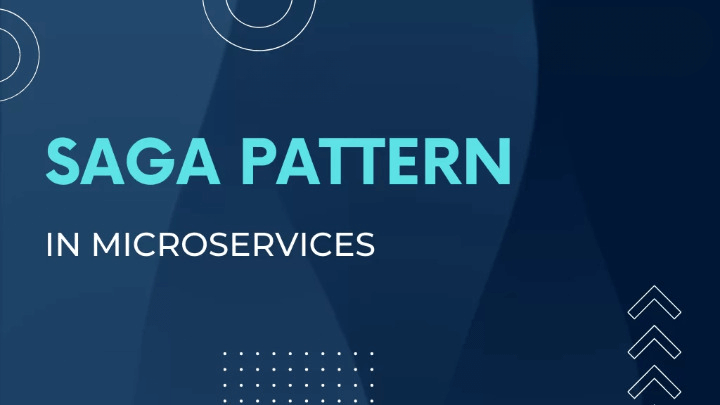Saga Pattern Performance
In this tutorial, we are going to discuss about the Saga Pattern Performance Implications, Issues and Special Considerations.
The Saga Pattern is a design pattern used to manage complex transactions that span multiple services in a microservices architecture. It aims to maintain data consistency and handle failures gracefully by breaking down a large transaction into a series of smaller, independent steps that are coordinated in a specific sequence. Each step (or saga) includes a compensating action to undo the changes made if something goes wrong.

Just like any other pattern or technology, saga pattern has its issues and special considerations. You’re curious about what these are, right? So, let’s dive in!
Issue 1: Complexity
The first issue is complexity. Remember how we split a large transaction into several smaller ones? That does ensure data consistency, but it also adds complexity. Each service in our saga now needs to handle its local transaction and provide a compensating transaction.
Consider our online shopping scenario. What happens if there’s a discount applied to the order but it gets cancelled due to unavailability of items? The Order Service would need to handle that as part of its compensating transaction. You see the complexity creep in, don’t you?
The Saga Pattern, while a solution, is not a simple one. It requires careful design and implementation to avoid creating a tangled web of services.
Issue 2: Longer Latency
The second issue is latency. In a distributed transaction like a saga, each service call is a network call. Network calls are slower than local calls, which means sagas could have longer latency than traditional transactions.
Let’s put this into perspective with our shopping example. In a monolithic application, placing an order and updating the inventory would be quick, happening in a single database transaction. But with the Saga Pattern, these operations happen over the network, which introduces a delay. Doesn’t sound ideal for a fast-paced business, does it?
Issue 3: Consistency Challenges
Ensuring data consistency across services can be challenging. While the Saga Pattern helps maintain eventual consistency, it may not guarantee immediate consistency, which can be a problem for certain applications.
Issue 4: Compensating Actions
Implementing compensating actions for each step can be complex and time-consuming. These actions need to be thoroughly tested to ensure they can reliably undo the changes made by the original actions.
Issue 5: State Management
Keeping track of the state of each saga and ensuring that the correct compensating actions are taken in the event of a failure can be complex and resource-intensive.
Performance Optimization Tips
- Parallel Execution:
- Where possible, execute steps in parallel rather than sequentially to reduce overall transaction time.
- Efficient State Management:
- Use efficient state management techniques to keep track of the progress and status of each saga. This can involve using lightweight, distributed state stores or event logs.
- Network Optimization:
- Optimize network communication between services to reduce latency. This can include using efficient serialization formats, minimizing the amount of data transferred, and optimizing network routes.
- Load Balancing:
- Implement effective load balancing to ensure that no single service becomes a bottleneck. This can improve the overall throughput of the system.
- Retry Mechanisms:
- Implement robust retry mechanisms with exponential backoff to handle transient failures gracefully. This can reduce the impact of temporary network or service outages on overall performance.
Special Consideration: Consistency
A special consideration in the Saga Pattern is consistency. Not data consistency, but application consistency. We know that the Saga Pattern ensures data consistency by executing compensating transactions in case of failures. But what about the business process?
Take the shopping example. If the inventory check fails, the order gets cancelled. But from a business perspective, cancelling an order is not the same as not placing it at all. These considerations need to be thought through when designing the saga.
Special Consideration: Idempotency
Another special consideration is idempotency. An operation is idempotent if performing it multiple times yields the same result as performing it once. In a saga, an operation could fail after executing but before reporting success. In such cases, the operation might be retried, making idempotency important.
In our shopping scenario, let’s say the inventory check fails after reducing the inventory but before reporting success. If the operation is retried, we don’t want the inventory to be reduced again. So, the checkAndReduceInventory method needs to be idempotent. Makes sense, doesn’t it?
Performance Implication: Increased Load
Lastly, let’s discuss a performance implication. The Saga Pattern could increase the load on your services. Remember the Saga Log we talked about? Each service needs to maintain one to keep track of the saga. This means extra read and write operations for each service, increasing the load.
Think about our Order Service. Apart from handling orders, it now also needs to manage its Saga Log. That’s extra work and could lead to increased load and slower response times.
Conclusion: A Trade-off
As you can see, the Saga Pattern, while powerful, comes with its set of challenges. It’s a trade-off, like most things in software architecture.
But then, isn’t that the very essence of software architecture – making trade-offs and finding the right balance? With a solid understanding of the Saga Pattern and its considerations, you’re now well-equipped to make an informed decision. Would you choose consistency over complexity, or would you prefer speed over distributed transactions? The choice, my friend, is all yours!
In summary, while the Saga Pattern can improve resilience and scalability in distributed systems, it also introduces complexity and potential performance challenges. Careful design and optimization are required to balance these trade-offs and ensure that the system performs well under various conditions.
That’s all about the Saga Pattern Performance Implications and Special Considerations. If you have any queries or feedback, please write us email at contact@waytoeasylearn.com. Enjoy learning, Enjoy Microservices..!!